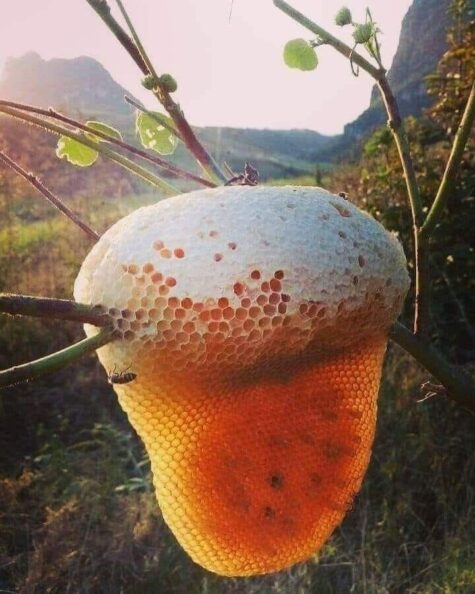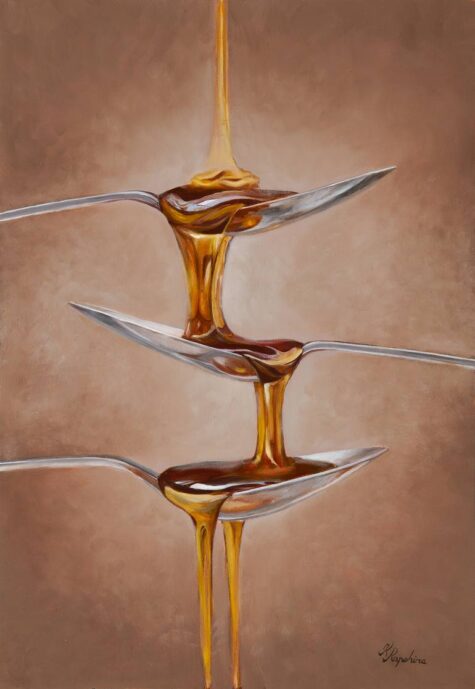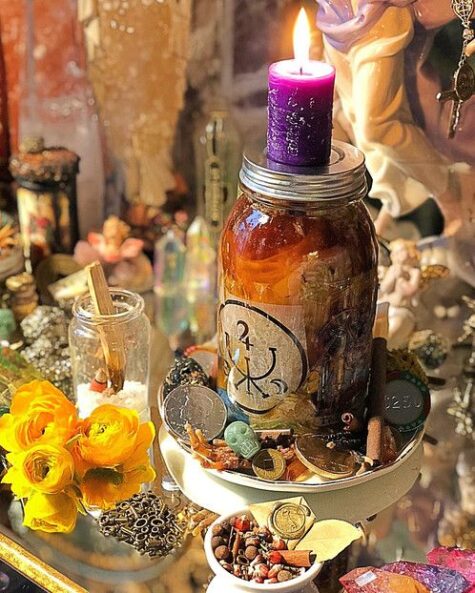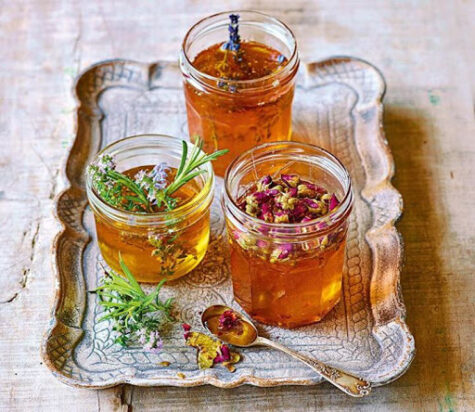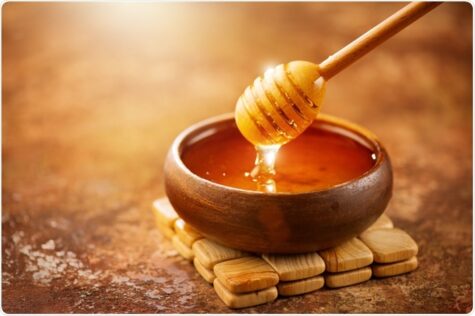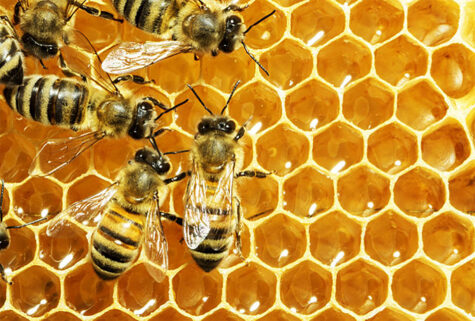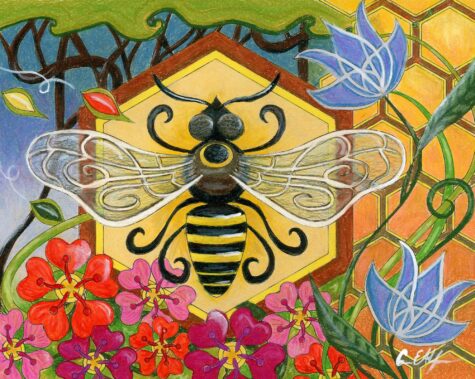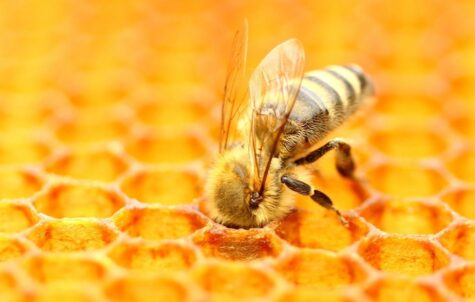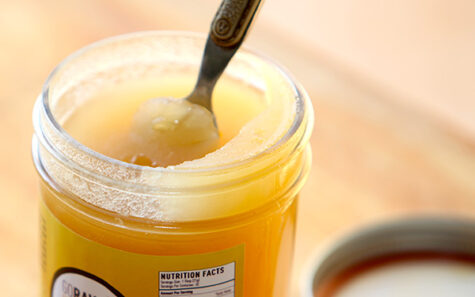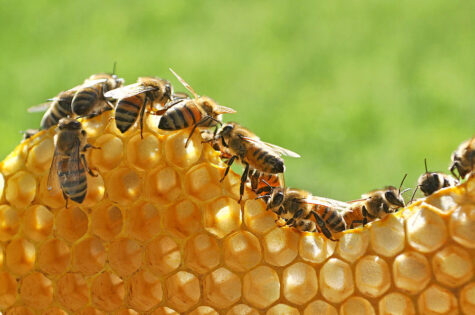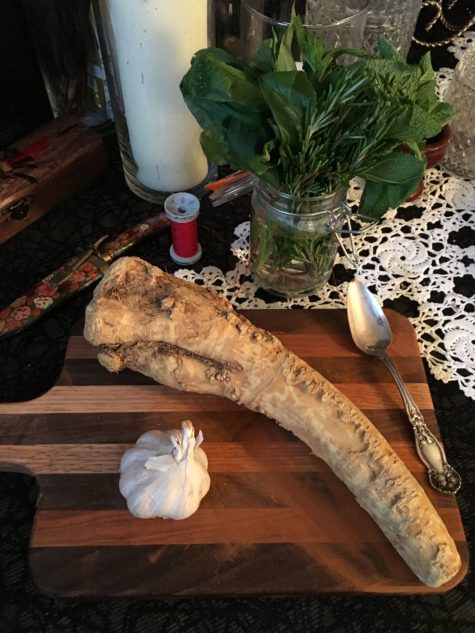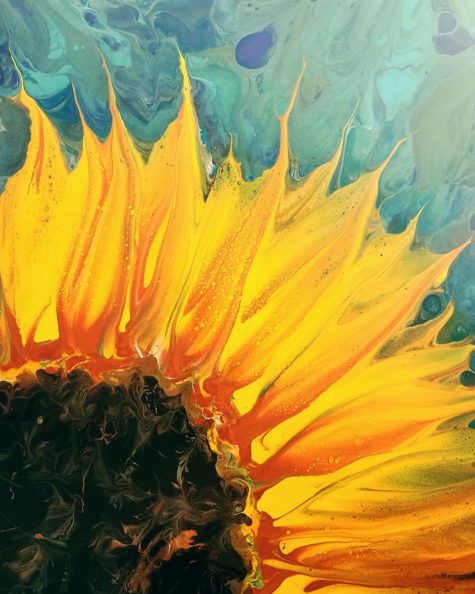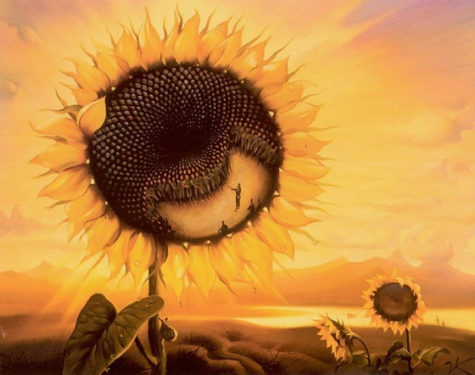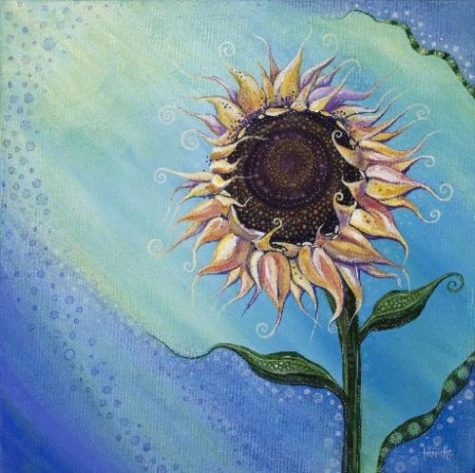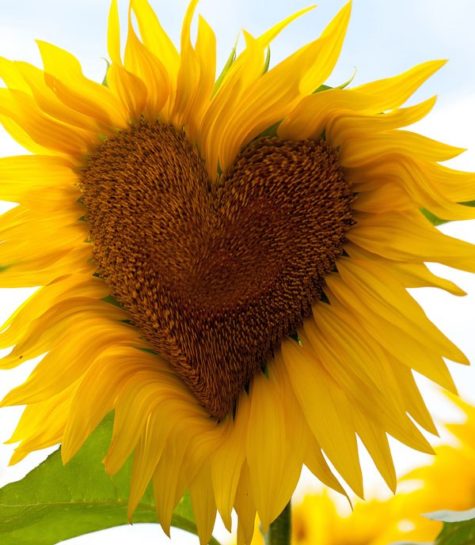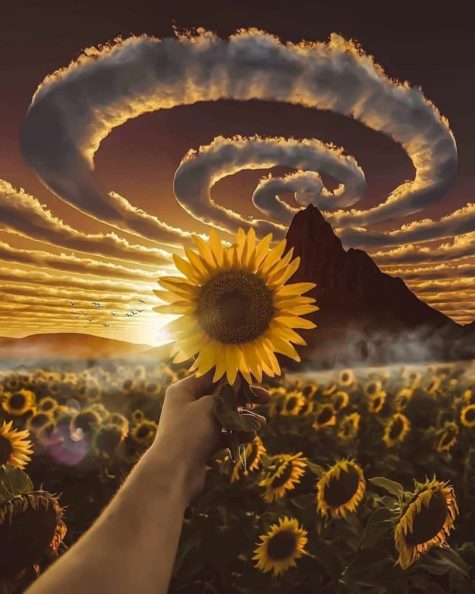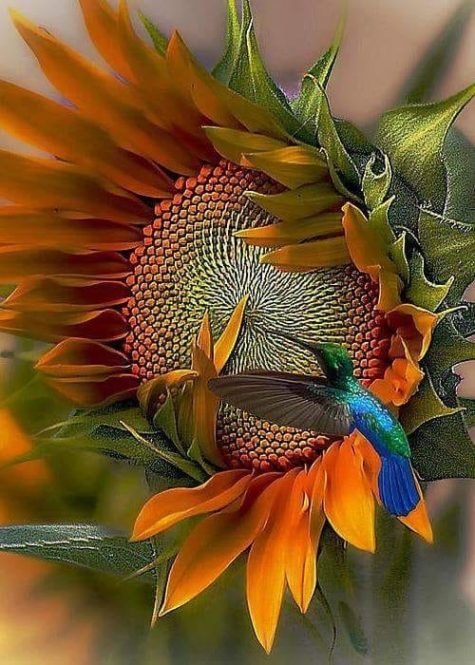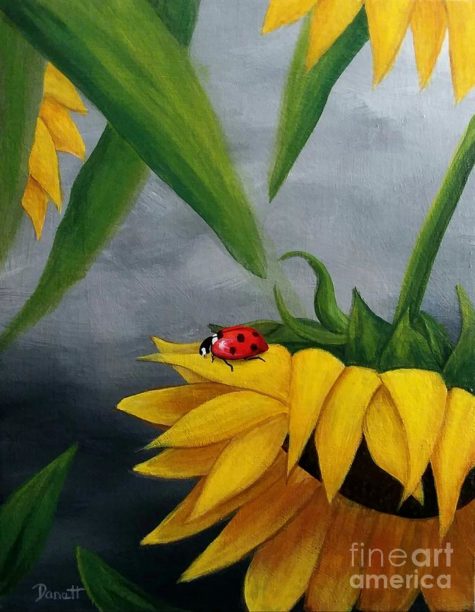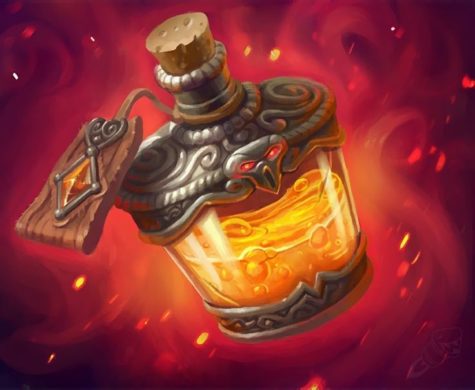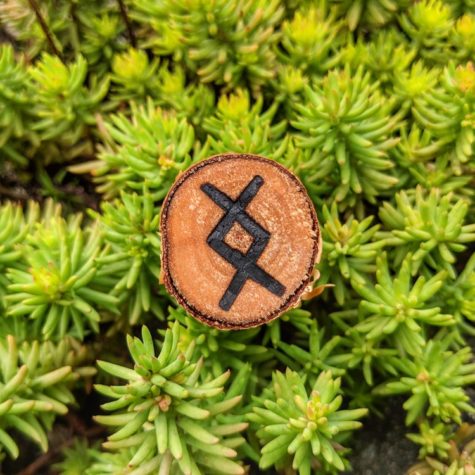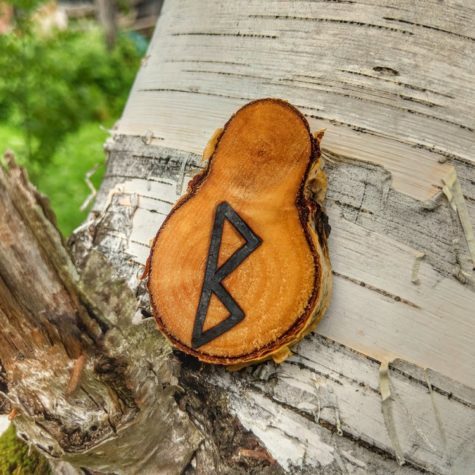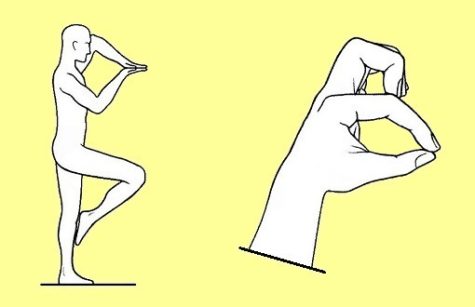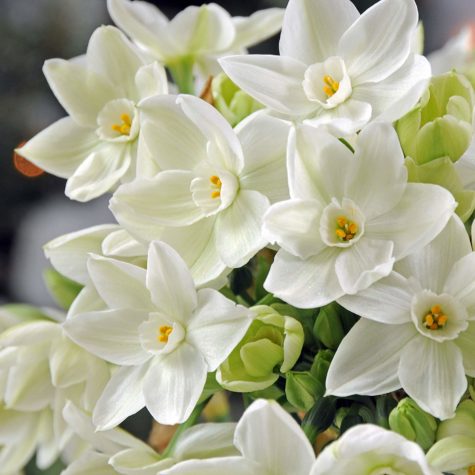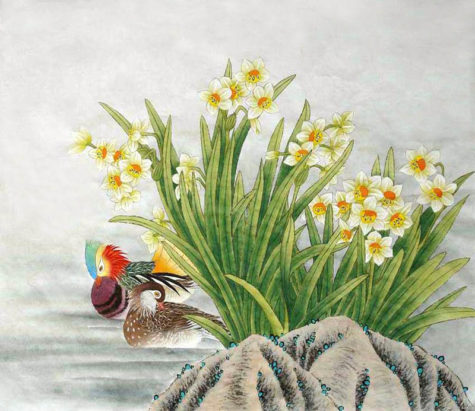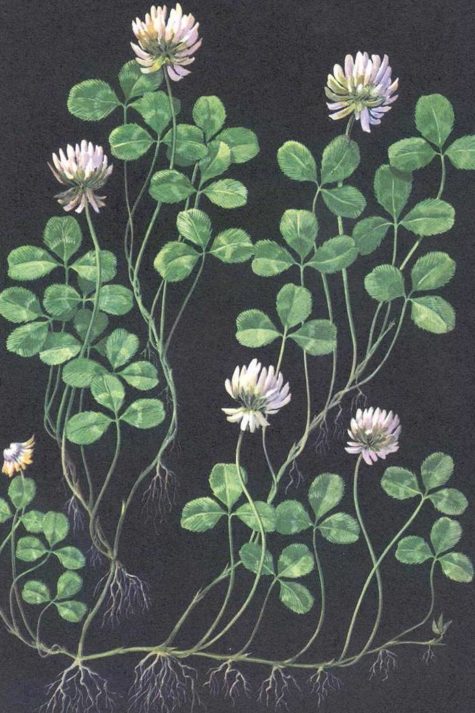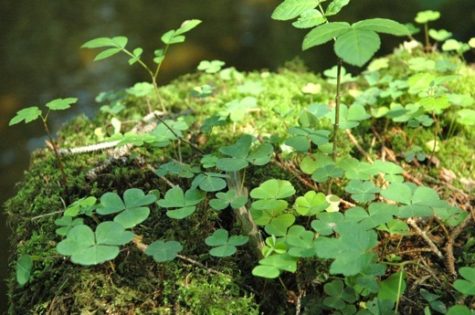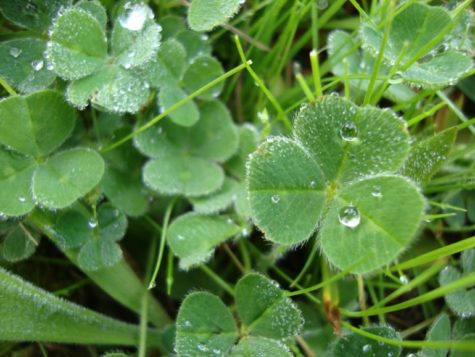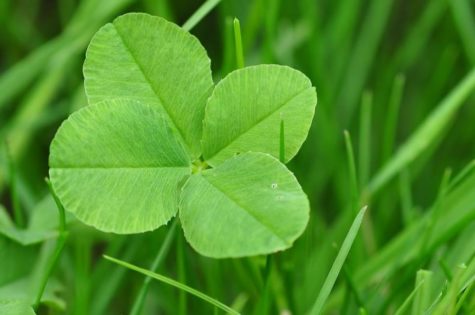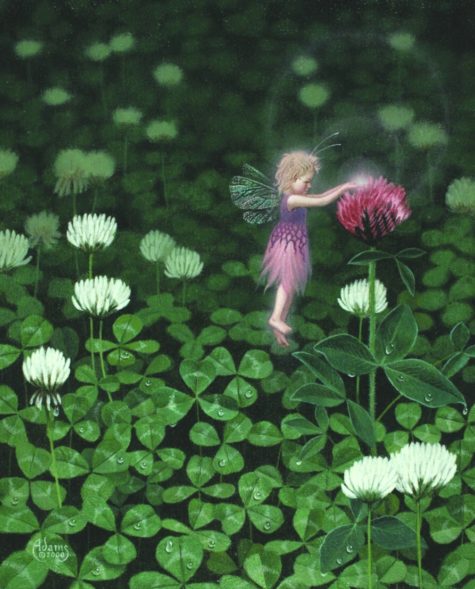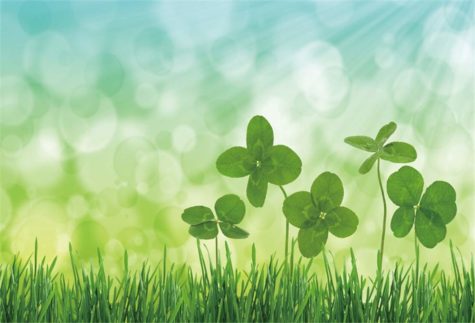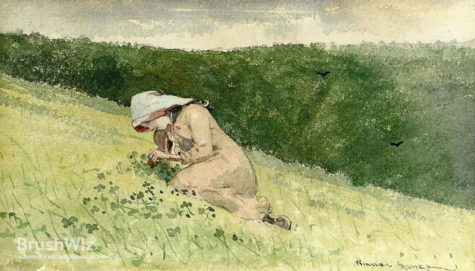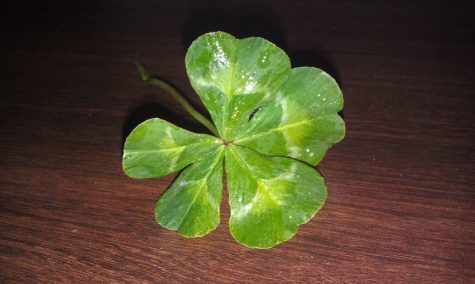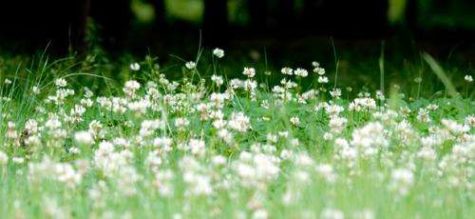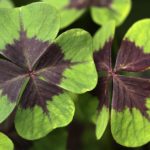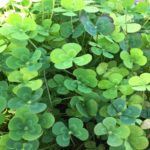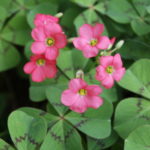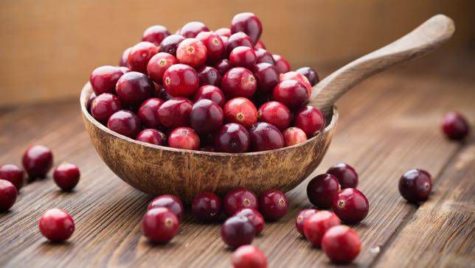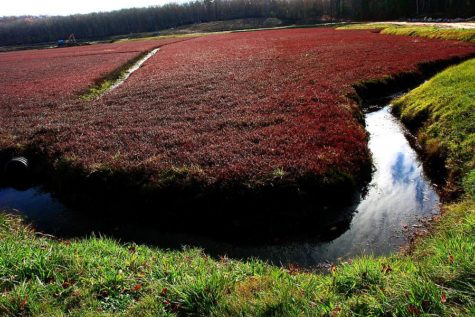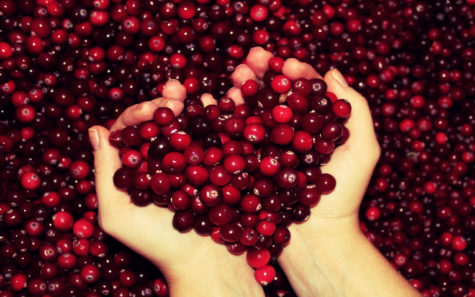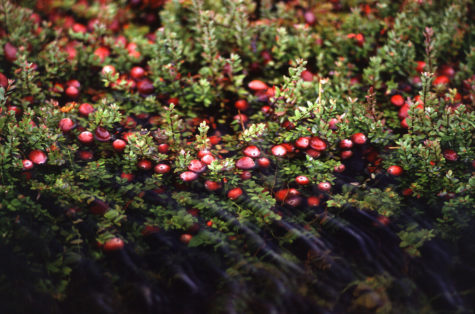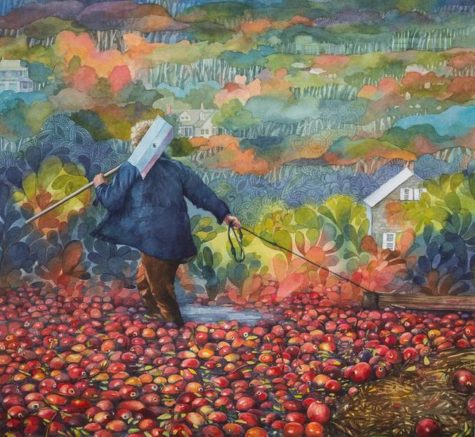Fertility
- Rulers: Oshun, Ra, Vishnu, Krishna, Aphrodite
- Element: Water, Earth
- Gender: Feminine
- Number: Six
- Sacred Geometry: Hexagon
- Type: Food
- Magickal Form: Any type
- Qualities: Sweetening, Binding, Happiness, Healing, Love, Prosperity, Passion, Spirituality, Faerie
Honey – the glorious nectar of the bees is one of the oldest foods known to man…and woman. Honey’s history is extensive. A 8,000 year-old cave painting in Valencia, Spain depicts humans hunting for honey. Honeybees were sacred to numerous ancient civilizations including ancient Greece and Egypt. Our ancient ancestors knew that honey isn’t JUST good to eat, it also has multiple medicinal benefits.
The oldest honey ever found comes from an Egyptian pyramid – it’s three thousand years old and still perfectly edible! Microbes don’t grow on honey, moreover preservation lasts for thousands of years!
The Egyptians held the honeybee in high regard and used honey in their mummification process. Therefore honey was a sacred substance and sacred to any gods and goddesses of the underworld and the dead: i.e. Anubis and Osiris. In Ancient Greece, the high priestess of Aphrodite was “Melissa” which translates to “bee”. She tended to the sacred beehives at Aphrodite’s temple on Mount Eryx.
Honey has a number of magickal proprieties, uses and distinct energies. the energies vary depending on which strain of honey you are working with. but overall I would describe them as positive, cleansing, gentle, soothing and warming. its great for spells, offerings and brews.
Honey can be added to any spell work or any culinary recipe to sweeten someone’s mood or disposition. Honey works well for happiness, love, prosperity and healing, it can also add a bit of zing to your love life too.
- Honey makes an acceptable offering for deities.
- It can be kept on your altar (I keep some on my altar to remind me that amongst the seemingly overwhelming bitterness of everyday life that sweetness can be found).
- Can be used in spells having to do with love, lust or sexuality.
- Purification (works great in bath scrubs).
- Health and healing.
- Community or communication.
- Abundance and prosperity.
- Spirituality.
- Candle magic (for anointing or beeswax candles).
- Honey can be used to represent wisdom, because gathering honey from hives can be difficult and painful if done incorrectly so it became a metaphor for obtaining knowledge through pain.
Honey is used to make mead which is absolutely delicious and wonderful to use in ritual and offerings…half a glass and I am away with the faeries…who actually like a drop of mead or honey as well…
Because of its sticky properties, honey can be used in magick to hold two things together. Some magical traditions use honey to bind a couple that has a shaky relationship. If you want to do a honey binding on a couple – or even on two friends who are struggling with their friendship – you can use poppets with a layer of honey between them, and then wrapped with a cord. Because honey does not solidify, you can always separate the two poppets later with minimal disruption. It’s good for binding spells because it can be undone fairly easily.
Use honey to sweeten a situation: angry co-workers or boss, court cases, family quarrels, divorces, etc. In addition, binding things or people together and keeping things flowing steadily. Healing and cleansing rituals include honey.
Use this sweet and sticky substance to attract good fortune, fertility, and love.
- For wealth, create an altar with coins drizzled with honey.
- For a conception spell, cover a pumpkin with honey and offer to a river.
- For love, bathe in warm water and honey.
- Add a drop of honey to incense blends to sweeten the mood.
- Add a spoon of honey to a bath to cleanse and sweeten your aura.
- Drip small drops of honey onto or around candles for love and prosperity spells.
- Leave on outside altars to attract faeries.
- Use to summon angels and light beings.
- Anoint your third eye with magical honey to dream of your future love.
If you do any kitchen magick, honey can come in very handy. Use it in dishes to bring about sweetness, fertility, or prosperity. You can use honey in rituals as an offering to deity–many goddesses and gods seem to appreciate it. You can also use a blend of milk and honey to asperge a sacred space if you’re holding ritual outdoors. Add some into a bath scrub for a ritual bath prior to working for love or romance, or anoint a candle with it when you’re doing candle magick.
Some ancient cultures used honey in embalming procedures. It’s always appropriate to leave offerings of honey at a gravesite. In addition, the folklore of a number of societies indicates that a blend of honey and milk is an acceptable offering to a deity. Honey makes an excellent offering to the gods, the spirits and the Faerie world.
Poured into the ocean and river, honey is an appropriate offering to sea and river goddesses like Oshun and Yemaya. Keep on the altar as a link to ancient bee priestesses and honeybee spirit guides.
In particular, honey is sacred to Aphrodite, the goddess of love and beauty. This is also a favorite offering for other love goddesses. An assassination attempt was once made on the African love goddess, Oshun. The plot was to poison her with honey. In remembrance of this, always taste the honey first before offering libations to any goddess.
In Hindu texts, honey is described as one of the five sacred elixirs of immortality. The Buddhist faith celebrates Madhu Purnima, which honors the day that Buddha made peace among his disciples – and honey is given as a gift to monks in his honor.
Honey Jars
These jars are also known as “sweetening jars,” and can actually contain almost any kind of pure sweetener, such as brown or white sugar, molasses, or syrup. You can make jars for each person you want to sweeten if you’re working more elaborate spells on them, or keep one jar with lots of names in it for general sweetening.
In some forms of Hoodoo and folk magick, honey is used to sweeten someone’s feelings towards you. In one traditional spell, honey is poured into a jar or saucer on top of a slip of paper containing the person’s name. A candle is placed in the saucer and burned until it goes out on its own. In another variation, the candle itself is dressed with honey.
Herbal Infused Honey
Honey comes in many forms and from many places all over the world. It varies in color, sweetness, and flavor depending on the region and plants. Some people enjoy infusing herbs and flowers directly into the honey itself. Depending on the herb or flower infused, it will alter the honey magic properties and can be further used for those purposes. For example:
- Lemon balm infused honey: soothes nerves and anxiety and aids in falling asleep; also invokes joy.
- Lavender honey: has honey magic properties of relaxation, love, beauty and purification.
- Rosemary honey: purification, money, love, healing, mental clarity.
- Mint honey: money, prosperity, cleansing, and love properties; plus mint aids digestion.
- Thyme honey: the PERFECT offering for attracting the faery folk to your garden! Thyme is a favorite of fairies as well as honey.
- Rose honey: love, healing, protection, long life.
Medicinal Properties
During the late summer and early fall, honey is a staple crop in many parts of the world. This deliciously sweet and sticky gift from the bee population is considered a health food – it will protect you against allergies if you eat just a teaspoon of locally sourced honey each day – and also has a number of magickal properties.
Honey is incredibly beneficial medicinally but also brings a good dollop of happiness with it. Honey is great for cold and flu treatment. Raw and organic honey is preferable as it is an antibacterial and is high in antioxidants. It can be used in an ointment for treating wounds, burns and cold sores. Honey is also an excellent hangover remedy.
Honey will help in muscle building; a teaspoon of raw organic honey after a workout can induce an insulin spike, allowing your muscles to get the most out of the workout. It can be used as a weight loss aid. Honey can cause changes to the metabolism that will help curb sugar cravings.
The healing power of honey has been known throughout the ages. Honey was used as a traditional Ayurvedic medicine, where it was thought to be effective at treating imbalances in the body. In pre-Ancient Egyptian times, it was used to treat wounds. The Prophet Mohammad glorified the healing powers of honey, and the Quran praised its healing ability.
Sacred Geometry of the Honeycomb
At the heart of our seasonal reverence, there is always light. In the dim light of midwinter we gather around a fire. My children tell me their own creation story of winter’s sleepy sun. It is her time to rest and the small brave fire remains beside us, a comfort in our sun’s absence…
We know winter happens because of the tilt of the earth, and we seek the fire because it warms us. Our winter fires provide one small spark of the sun’s fire. And the light of the sun not only gives us warmth, but color. We are cool blue in winter like the twilight that edges our days and we dream of the season that will fill our world with yellow particles of light like the pollen of the sun.
Many of us hold a glowing beeswax candle on special days during a festival or to create a ritual space. In his bee lecture, Rudolph Steiner compares beeswax to the material of our human body, the worker bees of the hive to the blood coursing through us, and the hexagonal shapes of the honeycomb to our cells. Structures of living organisms are mirrored throughout the natural world and beeswax reminds us of our relationship to the earth. The sweet smell of it when we light a candle is a hint of the warm comfort a bee might find in her small sacred capsule.
Each cell of the honeycomb is a hexagon. It is the perfect shape, the one that holds together in strength and efficiency. There is no waste in a system of cells that fit together at perfect angles, a necessary consideration when a honeybee must consume about eight ounces of honey to create one ounce of wax. The worker bees create their city of hexagons in tandem, each bee following her inherent plan of geometric repetition.
Each cell of the honeycomb may hold the golden honey, converted nectar from meadow flowers; or the precious life that will someday gather more honey, the bee’s larva. So the worker bee creates these small spaces as vessels of life, whether she is aware of this significant purpose or not. We can watch the honey bee create these small sanctuaries, her working body warming the cell as she forms it. This is her part in the circle of life and she puts her heart into her work.
If you wish to draw the honey bee’s symmetrical hexagon shape, you may start with the hexagram, the star that is made by overlapping two equilateral triangles. Connect the points of that perfect star to make the most precise hexagon. The star inside the hexagon holds the poetry of the honey bee’s sacred forms and their relationship to the spiritual body of our human world.
The hexagram, the six-pointed star, is the shape associated with Anahata, the heart chakra. It is the Star of David, it is associated with the Kabbalistic tree of life, and it is one symbol associated with the Christian Son of God. The hexagram is significant in Tibetan Buddhism, in astrology, in occult magic and Wicca practices. Here, once again, is nature’s pattern of repetition through time and space and meaning.
The honey bee sings while she works and we hear her spirit song. Her hum is spun into the fiber of summer so that we associate this vibrational sound with brilliant rays of sunlight that make us stop and close our eyes and feel the sun on our faces. It is no wonder the wildflowers turn their faces toward the sun and are graced by the light healing touch of the gentle honey bee.
The Bee Connection
Bees are incredibly magickal and are often said to be messengers from the Gods and the spirit world.
Tell it to the bees…they are great listeners…when a beekeeper died folklore says that the survivors must tell the bees of their keeper’s death and persuade them to stay rather than follow their keeper to the otherworld.
Anything important should be told to the bees such as marriages, births and other important events but make sure you whisper politely.
Bees are also considered to be an image of the human soul, perhaps due to their natural ability to find their way home from great distances.
Save the Bees!
Humans have relied on the honeybees’ magical work for thousands of years. Not just for honey and its unique magick, but also because honeybees are one of our biggest pollinators! They help us make food by pollinating many of our fruits and vegetables. But sadly, the honeybee populations are dwindling worldwide.
Particularly in the U.S. where there’s a link between pesticides and honeybee disease/death. If all of the honeybees die out, we lose a large portion of our food source. So how do we support the honeybee population and health? Here’s some ways you can help:
- DON’T use pesticides in your lawn or garden and encourage your friends, family and neighbors to do the same
- Plant NATIVE flowers, trees, and shrubs. Native flowers and plants aid your local honeybee and other pollinator populations by providing a natural nectar source
- Put a bee bath in your garden for the bees to bathe and drink
- Support your local organic beekeepers, farmers and gardeners in their efforts to save the honeybees
- Instead of having a honeybee hive destroyed – have someone come out and remove it and re-locate it
- Stop cutting down trees that don’t need to be cut down! Bees and other pollinators and wild life need trees too!
Learn more about how to save the bees here! Help The Bees
Important Note
There is a MAJOR difference between natural raw unpasteurized honey, and processed filtered honey. Most commercial honey has no traces of pollen and lacks beneficial vitamins and enzymes among a host of other natural constituents which are removed due to pasteurization and processing.
Most golden honey you see at your local grocery is dead and far from the health promoting powerhouse of its raw unpasteurized counterpart. Processed honey is not honey at all, and if you desire any kind of health benefits, you must stick to the real stuff.
Sources:
- Magickal Ingredients
- Honey in magick and Folklore
- Vaya’s Witchcraft and Spiritual
- A Kitchen Witch’s World of Magical Food
- Honey Coyote
- Otherworldly Oracle
- Wanderlust
- Shelley Giordano
One of the strongest ingredients for male virility, the Horseradish root is in essence magickal Viagra. It is cultivated in the spring and difficult to find at any other time of the year.
- Women should lay the whole root on the belly and visualize either getting pregnant or being satisfied sexually.
- Men must hold the whole root to the genitals and visualize long-lasting erections.
- Perform these visualizations on a full moon.
Eat both white and red shredded horseradish at any time of the year for protection.
To reverse any malevolent magick against a building’s inhabitants, grate or grind dried horseradish root. Sprinkle it over your thresholds, corners, windows, and any areas perceived as vulnerable.
Source: Encyclopedia of Herbology
- Scientific Name: Helianthus annuus
- Type: Plant
- Quality: Hot
- Planet : Sun
- Element: Fire
- Parts Used: Seed, Flowers, Whole Plant
- Basic Powers: Protection, Fertility
When summer is at its peak, its not uncommon to see rows of sunflowers blooming in all of their colorful glory. Ranging from just a foot or two high to well over eight feet in height, sunflowers come in a variety of yellows and oranges. Sunflowers have been growing in North America for ages, so there is a significant amount of folklore surrounding them.
No flower can lift someone’s spirits quite like sunflowers. They are bright and cheery, and as warm and inviting as the sweet summer sun. With brilliant yellow petals, also known as “rays,” sunflowers have an unmistakable sun-like appearance.
As its name signifies, the sunflower has close solar associations, not only because of its appearance, but also because of its habit of turning its head to follow the course of the Sun during its journey across the sky.
Spirits of the dead are drawn to this flower, for it reminds them of the sunlit world they once lived within.
The sunflower has magickal powers, too, and adorned the crowns of Roman emperors, thereby conferring the ruler with the potent power of the Sun that the flower held within it. The sunflower was later adopted by the Christian Church to denote the saints, prophets, and apostles of the faith; as the flower follows the Sun, so the true believer follows God.
Sunflower Lore
The sunflower originated in South and Central America, and migrated north, most likely due to the migration of Spanish conquistadors. Remains of sunflowers dating back 4,600 years have been found in Mexico. In the 1500s, Spanish explorers took sunflowers back to Europe with them, and the species has spread around the world since then.
In the 16th century, Inca priestesses in Peru worshiped a giant variety of the sunflower plant. This plant was a symbol of the Inca sun god.
The Inca priestesses wore clothing that was adorned with large flower shaped ornaments. These ornaments and decorations were made from gold, and the image of the sunflower was often carved into golden breastplates.
The sunflower was sacred to Native Americans; the flowers were used extensively in celebrations and festivities.
Native Americans used this plant for food and other things. It is believed that it was a very important Native American crop. Like the Inca priestesses that came before them, Native Americans also worshiped the plant.
They held spiritual ceremonies such as the Sun Dance. As well as being a food source, the flower became a symbol of strength and endurance. They would put sunflower seeds on top of graves containing their dead.
Early colonists in North America learned about the many uses of sunflowers from the tribes near them. In addition to being useful as a source of yellow and orange dye for fabric, the sunflower also comes in handy medicinally – it was known for its antimalarial properties.
Sunflowers In Legend
The Greek legend had it that a nymph called Clytie and the Sun God, Helios, were in love. But Helios cast aside poor Clytie for another lover. Clytie died of grief and was transformed into the sunflower, destined to live alone and having to follow the course of her former love. Therefore the sunflower, as a symbol has adopted an aspect of Clytie’s personality: the inability to overcome the emotions or to “let go.”
- An alternative story is as follows:
There was a maiden who fell in love with Apollo. Every time he passed overhead in his fiery sun chariot, she stood in her garden and gazed at him longingly, even though she had chores and tasks to attend to. Apollo, who made a point of shining brightly so people on earth couldn’t actually see him, eventually got fed up with the girl’s foolishness. He flung one of his sun arrows at her, and she turned into a sunflower on the spot.
To this day, she faces east in the morning and west in the evenings, following the path of Apollo. In some versions of the story, it was not Apollo but the other gods who took pity upon her and turned her into a sunflower.
Sunflower Symbolism
The sunflower is a symbol of light, hope, and innocence, and has been adopted fairly recently as a symbol for world peace.
Sunflowers are known for being “happy” flowers, making them the perfect gift to bring joy to someone’s (or your) day.
In many folkloric traditions, sunflowers are seen as symbols of good luck. Sunflowers are often associated with truth, loyalty, and honesty.
The seed head of the sunflower contains a magical symbol. It shows a perfect example of the golden spiral that has been created naturally. This shape is one of the cornerstones of sacred geometry.
The Victorian language of flowers gave it various connotations, so that in certain contexts it stood for lofty ideas, or less flatteringly as a symbol for false riches.
In China, this flower symbolizes longevity or long life. It may be due to the sun which is perceived to have an enduring life even though eventually it will die out.
On a practical note, when these plant stems are cut to make flowers for vases and bouquets, they can last for 2-3 weeks so are quite hardy.
In dreams, the sunflower is believed to be a very lucky symbol or motif. It is viewed as symbolizing career and employment ambitions, wealth, good fortune and positive opportunities.
This flower is quite the lucky charm for someone who may be beginning on a new career path or starting a job.
One of the sunflower’s greatest and most important symbolic meanings is that of having a nuclear-free world. This flower was chosen back in 1996 in order to represent a world of peace and one that is free of any harmful nuclear weapons.
New varieties and seeds were planted during this time on an old Ukrainian missile base and also planted across nuclear disaster sites such as Fukushima, Chernobyl and Hiroshima.
The flowers have been shown to absorb harmful toxic elements and radiation from the soil and clean up the environment. Being so good for the environment as well as beautiful to look at, it is no wonder that the sunflower has now truly become a symbol of peace and also hope for the future of humankind.
Magickal Uses:
Faery flower sorcery sees the sunflower as harnessing the energy of the sun itself, making it useful for positive magick and lightwork. The light contained in its yellow petals radiates strength, useful for dispelling depression and encouraging a healthy sense of pride.
The flowers growing in the garden bring the blessings of the Sun. The seeds are often eaten by women who wish to conceive. This is done during the waxing Moon.
Always include a sunflower or sunflower seeds in a birthday spell to increase happiness, health, and years. Sprinkle the seeds on the earth to invoke prosperity. Place the flowers on a love altar to invoke a long-lasting relationship.
Sunflowers are symbols of good luck. Planting them around your home and garden will bring fortune your way. It is also said that if you pick a sunflower at sunset, then wear it on your person, it will bring you good luck the following day.
Sunflower seeds that dry and remain on the flower head are said to possess the magickal capacity to grant wishes. Hold an individual seed in your left hand and make your wish. Eat the seed or plant it in Earth.
Sunflowers are also associated with truth, loyalty, and honesty. If you want to know the truth about something, sleep with a sunflower under your pillow – and the next day, before the sun goes down, the truth should be revealed to you.
To reveal a thief, place three sunflowers under your pillow. The thief will be revealed in your dreams.
The sunflower is considered a flower of loyalty because day after day, it follows the sun, from east to west. In some folk magic traditions, it is believed that slipping a bit of sunflower oil or seeds into someone’s food or drink will cause them to be loyal to you.
The sunflower is often associated with fertility, thanks to its connection to the sun. To bring about conception, eat sunflower seeds or take a ritual bath with sunflower petals. A necklace or crown of dried sunflower heads can be worn–particularly at Litha, the summer solstice–to bring about fertility.
In 17th Century Europe, some rural practitioners of folk magic used an ointment that would help them see the Faerie folk. This used a blend of several summer, sun-oriented flowers, mixed in with sunflower oil and left in the sun for three days until it thickened.
Some people believed that sunflower seeds were preventatives against the spread of smallpox. Weave and knot dried sunflowers into necklaces and wear them to magickally repel smallpox.
In some forms of Hoodoo, the sunflower is associated with great joy. The oil is often used as a base in magical oils for ritual purposes. You can blend your own magical sunflower oil by blending freshly harvested petals into a carrier or base of sunflower seed oil, which is available in most grocery stores.
Please note that this is not the traditional hoodoo sunflower oil recipe, but it is still one that is effective. Once you’ve mixed your oil, consecrate it according to the method of your own magical tradition before using it in spellwork or ritual. A simple way to do this, with sunflower oil, is to leave it in the sun to absorb solar energy prior to use.
Brew a tea of sunflower petals in water, and use it to asperge around a sacred space during Litha rituals or solar-related spellwork. If you’re grieving or feeling down, use sunflower petals in a ritual bath for a magical, sunny pick-me-up.
The Spiritual Meaning of the Sunflower
The sunflower appears to worship the sun because the blooms have been thought to face the sun as it slowly moves and travels across the sky each day.
Many people view this flower as being highly spiritual. These flowers appear as if they follow the sun as it moves each day from East to West in the sky. It makes the flowers look as if they are highly loyal and devout, just as a follower of faith is.
In a spiritual meaning, these plants are seen as being genuine followers of the sun. This has a connection with Christians following God and other religions following their spiritual guide or divine being.
No matter how small or how little light there is, sunflowers are believed to seek out the light and hold their heads high as if in worship and adoration of the sun.
They are therefore a symbol of true and faithful loyalty to something that is much brighter and bigger than themselves.
Sources:
- Magical Herbalism
- Learn Religions
- Encyclopedia of Magickal Ingredients
- Feri Tradition
- Element Encyclopedia of Secret Signs and Symbols
- Pro Flowers
Essential oils for prosperity and abundance can draw more than just money; fertility, time and opportunities are also included. Basil, pine, patchouli and jasmine are effective when used in spells to bring abundance in your life, as long as you program the action with intent. For example, dab a drop of basil or peppermint oil inside your wallet to draw in more money while imagining your wallet filling with crisp $20 bills.
Note: The Aromatherapy for Prosperity page has a lot of information on this subject. If you are interested in using essential oils to bring in money, it’s worth taking a look at.
- Basic Powers: To end a cycle of events or specific situation.
- Pronunciation: “eeeng-wawz”
To gather people or to influence them. It can be used to establish dedication and loyalty, the “we” of a group. It can be used as a rune of fascination, which makes it suitable for strengthening hypnosis, trance, or meditation. It can also be used for gaining the respect of others, or gaining influential positions in a community.
Ingwaz (or Ing) represents the male consort of the Earth Mother and as such is also a symbol of fertility. It is often used in the final position of the runescript to indicate a successful outcome. It is a very positive rune. Fertility. To release energy suddenly. To bring something to a satisfactory end. To “fix” the outcome of your runescript so that the benefits indicated therein do not drain away.
Storage and transformation of power for ritual use. Fertility rites. Passive meditation and centering energy and thought. Sudden release of energy. Sex magic.
The Chant
ingwaz ingwaz ingwaz
i i i i n n n n g g g g
ung ang ing eng ong
ong eng ing ang ung
i i i i n n n n g g g g
It can be used in conjunction with the symbol, or chanted while visualizing the symbol. The symbol can be etched into a candle while intoning the chant, and then, as the candle burns, the spell is released and sent.
The Statement of Intent:
He moves across the lands;
visiting his farmer friends
giving gifts of great bounty.
This is a modern version of the “Rune Poem” that defines this particular rune. It can be used in combination with the chant, and while creating a talisman or spell that uses the power of this rune.
Sources:
- Howard, Understanding Runes
- Thorsson, Futhark
- Peschel, A Practical Guide to the Runes
- Cooper, Esoteric Rune Magic
- Image from Deep Earth Arts
- Basic Powers: For fertility, family matters and love affairs.
- Pronunciation: “bear-kawn-oh”
Healing, good health, calming troubled minds and atonement, childbirth and fertility.
Berkano (or Beorc) is the rune of the Great Mother and as such is the primary rune of fertility. It also conceals and protects and rules over all protective enclosures, such as houses or temple areas. It is very good to use in a runescript for the peace, projection and harmony of a household. It represents a very feminine and nurturing female type. Fertility. Protection. Family matters. To bring ideas to fruition. To represent a certain type of female in a runescript.
Rebirth in the spirit. Strengthens the power of secrecy. Works of concealment and protection. To contain and hold other powers together. Realization of the oneness of the moment as the mother of all things. Bringing ideas to fruition in the creative process.
The Chant
berkano berkano berkano
bu ba bi be bo
b e e e e e r r r r r
(burk bark birk berk bork)
ob eb ib ab ub
b e e e e e r r r r r
It can be used in conjunction with the symbol, or chanted while visualizing the symbol. The symbol can be etched into a candle while intoning the chant, and then, as the candle burns, the spell is released and sent.
The Statement of Intent
Your green leaves bloom early
giving us knowledge
that Spring has come again.
This is a modern version of the “Rune Poem” that defines this particular rune. It can be used in combination with the chant, and while creating a talisman or spell that uses the power of this rune.
Runic Posture
Rune Yoga, or Runic postures are used to anchor the energy of the Rune in your physical body. More about them can be found here: Runic Postures.
Assume the recommended runic posture and sing the name of the rune in a non-exhaustive way that you can feel your body vibrating – in magic literature it is called vibrating. It could be that you can hear overtones clearer as usual during vibrating. Take this as a good sign. You are visualizing the rune with your inner eye, as its form is being represented by your body and the energies are flowing through your body.
Standing with the right arm bent at the elbow and the right hand palm up. The left arm is bent at the shoulder with the left palm down. The two hands meet in the middle. Bend the right knee, and hold your foot against the front of your left leg.
 Because the traditional position seems almost impossible to accomplish, here is a much more comfortable variation:
Because the traditional position seems almost impossible to accomplish, here is a much more comfortable variation:
Stand up, with the left arm bent at the elbow and the palm of the hand on the hip. The left leg is bent at the knee, the heels touching. The left foot is placed at a 90º angle with respect to the right foot. The elbow and knee form the corners of rune B.
Before practicing a rune it is recommended to know everything on the powers of the rune you want to practice. The flow of energy is different for each rune, a field of research for your sensitivity.
The hand positions, or mudras are effective only after you have anchored the runes in your own aura and body. They can be made silent and unobtrusive.
Sources:
-
- Understanding Runes
- Asatru
- Futhark
- Flight of the Condor
- A Practical Guide to the Runes
- Esoteric Rune Magic
- Image from Deep Earth Arts
- Basic Powers: To bring events to culmination.
- Pronunciation: “yare-awe”
Comfort; harmony with others. A symbol of right thoughts and right action leading to right results, a culmination of efforts over a long period of time. It is also good for gardening, farming, having a happy home, and good times. Put Jera over the door of your house on New Year’s Eve. Use indelible ink because the luck is meant to last as long as Jera remains there.
Jera is the rune of the harvest, of rewards arriving at their proper tine. It also governs legalities of all sorts and is useful in all legal matters. Use when a tangible result is expected for an outlay of money, time or effort. Helps to bring events to pass. Helps in legal matters. Fertility.
Fertility, creativity. Peace, harmony. Enlightenment. Realization of the cyclical nature of the multiverse. Realization of the mystery of the omnipresent circumference. Bringing other concepts into material manifestation.
The Chant
jera jera jera
j j j e e e r r r a a a
j j j j j j j j j
ju ja ji je jo
(jur jar jir jer jor)
j j j e e e r r r a a a
It can be used in conjunction with the symbol, or chanted while visualizing the symbol. The symbol can be etched into a candle while intoning the chant, and then, as the candle burns, the spell is released and sent.
The Statement of Intent:
The sky wolves have retreated;
Sunna warms the land below.
Freyr and Freya have
bestowed upon us a great bounty
for all the folk.
This is a modern version of the “Rune Poem” that defines this particular rune. It can be used in combination with the chant, and while creating a talisman or spell that uses the power of this rune.
Runic Posture
Rune Yoga, or Runic postures are used to anchor the energy of the Rune in your physical body. More about them can be found here: Runic Postures.
Assume the recommended runic posture and sing the name of the rune in a non-exhaustive way that you can feel your body vibrating – in magic literature it is called vibrating. It could be that you can hear overtones clearer as usual during vibrating. Take this as a good sign. You are visualizing the rune with your inner eye, as its form is being represented by your body and the energies are flowing through your body.
Stand up straight with your left arm bent, left hand at your waist. Your right arm is brought up to your head. Bend the elbows as shown in the image above.
Before practicing a rune it is recommended to know everything on the powers of the rune you want to practice. The flow of energy is different for each rune, a field of research for your sensitivity.
The hand positions, or mudras are effective only after you have anchored the runes in your own aura and body. They can be made silent and unobtrusive.
Sources:
- Understanding Runes
- Asatru
- Futhark
- Flight of the Condor
- A Practical Guide to the Runes
- Esoteric Rune Magic
- Ruler: Dionysus
- Type: Plant
- Sign: Virgo
- Tarot Card: The Hermit
- Magickal Form: Flower, Essential Oil
The Narcissus is often assigned to the month of December, and is also associated with the Chinese New Year which occurs in February.
Wear this scent to entice others and promote self-love and self-confidence. Overuse can attract stalkers and create egomaniacs – so don’t over do it. Rub on pink candles to meet new people. Rub black Narcissus oil on black candles for self-hypnosis. Use the oil on red candles to hypnotize and bewitch another.
In China, for centuries, narcissus bulbs have been placed in bowls with rocks and water. They are then “forced” into flowering by the Chinese New Year to acquire good fortune.
This old-fashioned flower for late spring is famous for its fragrance, which is one of the most expensive in the world. The Romans made a perfume from this flower, and it featured in early Arab perfume as well. The scent is a combination of jasmine and hyacinth. Its fragrance affects the nervous system (Mercury again), relieving stress.
These beautiful flowers emit sweet, lovely fragrances long used to manifest new relationships or to enrich the love already shared with another. The purple varieties seem to be best for this use. In the Middle East, the scent is thought to be aphrodisiac.
Magickally, this old-fashioned flower is dedicated to virgins, hermits, those who practice a solitary spirituality, and people who just enjoy being alone. Reasonably, it is connected to the sign of Virgo and the Hermit card. Venus bathed in narcissus flowers before winning a contest of beauty against Juno and Diana, but the plant is sacred to Adonis.
You would think then that this magick herb would be associated with the Sun, but instead it is considered a Mercury herb. Its name comes from the word for “stuck dumb” due to the power of its poisons to take away speech, which Mercury rules. Narcissus is specific for Mercury magickal works, such as those leading to parthenogenesis and invisibility.
Narcissus vs Daffodil
Though their botanic name is Narcissus, they are often also called daffodils, and sometimes jonquils, or paper whites. In England, because of their long association with Lent, they’re known as the “Lent Lily.”
The term “Daffodil” commonly refers to Narcissus with large trumpets, but may be used for all types of Narcissus . This is the official common name for ANY of the plants that fall into the genus Narcissus. So, if the plant is considered a Narcissus, it is also considered a daffodil as well. However, most people use the term “daffodil” when referring to the large, trumpet-shaped flowers of the Narcissus pseudoNarcissus .
- In Victorian flower language daffodils signified regard and chivalry, whilst the Narcissus meant self esteem, female ambition or vanity.
You can read more about the magickal properties of the Daffodil here: Daffodil Magick and Lore.
Narcissus in Mythology
The Narcissus is named after the legendary young Greek man of the same name. Narcissus was pretty full of himself because he had been given the gift of great beauty by the gods. One day, a sweet young wood nymph named Echo spotted Narcissus hanging out by a stream and instantly fell in love with him. However, he was so busy being completely self-absorbed that he ignored Echo, and she wasted away from loneliness until nothing was left of her but her voice. Thanks to this tragic story of unrequited love, the Narcissus is sometimes used to represent a love that is one-sided.
Later, the goddess Nemesis, although in some versions, it’s Venus, got wind of what had happened to Echo, so she decided it was time to teach Narcissus a lesson. She led him to a stream, where he happened to notice the most beautiful young man he had ever seen – it was his own reflection, and he was so vain that he fell in love with his own image, transfixed, and forgetting to eat and sleep. Some of the other gods were worried that Narcissus was going to starve to death, so they turned him into a flower, which now blooms every year in the spring.
- Alternatively
It is possible that this plant wasn’t named after the youth who fell in love with his reflection in a pool of water. Pliny states that the name was derived from the word “narkao, to benumb, due to the plant’s dramatic effects on the nervous system when taken internally. Never eat any part of this plant.
- Folk Names: Trefoil, Honeystalks, Three-leafed Grass
- Ruler: Jupiter, Mercury
- Element: Earth, Air, Fire, Water
- Types: Red, White
- Magickal Forms: Three leaf, four leaf, and five leaf
- Basic Powers: Protection, Luck, Fertility, and Abundance
Clover was one of the anti-witch plants which protected human beings and animals from the spells of malevolent witches and the wiles of fairies, and brought good luck to those who kept it in the house, or wore it in their buttonholes or hats. Some varieties of clover have three distinctly heart shaped leaves ~ both elements, the number 3 and the shape, contribute to its benevolent reputation.
The shamrock, the form of clover that is synonymous with all things Irish – was known as the shamrakh in Arabic countries and symbolized the triple aspect of the Goddess. A symbol of luck, leprechauns, and wishes, the shamrock is a powerful talisman to carry.
It could be used in love-divination; and to dream of it was very fortunate for young people, since such a dream foretold a happy and prosperous marriage.
Red clover flowers bring good luck in love and marriage matters and are carried in mojos for satisfying conjugal relations and to ensure a happy marriage. White clover flowers protect from evil and bring an end to “crossed” conditions.
In folk magic Red Clover is used in a ritual bath to attract money and prosperity to the bather and is also used as a floorwash to chase out evil and unwanted ghosts. White Clover is used for breaking curses and is worn as a sachet or put in the four corners or a house or someone’s property to achieve this.
If someone has done well in life, he or she is said to be “living in clover.” This probably originates from the fact that cattle grow best when grazing in fields of clover.
Clover keeps snakes away from your property, if grown there. When placed in the left shoe, and then forgotten, clover keeps evil from you. Worn over the right breast it brings success in all undertakings.
If you have been disappointed in love, wear clover near your heart in a piece of blue silk to help you through.
It also protects against madness, strengthens psychic powers, enables you to detect the presence of spirits, and leads the wearer to gold, money, or treasures.
Clover vs Shamrock
The term shamrock is derived from the Gaelic word seamrog which means “little clover.” It is famous as a symbol of Ireland. St. Patrick believed that the three tiny leaves represent the Holy Trinity, which it is all over the place on St. Patrick’s Day.
There is no specific “shamrock plant.” However, most scientists agree that the term “shamrock” refers to Trifolium Repens or the white clover. Others believe that it is also used when referring to Trifolium Dubium or suckling clover. Both species have leaves that are separated into three leaflets, hence the term “trifolium.”
On the other hand, clover or “trefoil” is a common term that refers to any of the 300 species that belongs to the Trifolium family. Trifolium plants like the red clover, white clover, Swedish clover, strawberry clover, and Alsatian clover are small, green, flower-bearing, and herbaceous. They can be short-lived, perennial, or annual.
A clover is trifoliate, which means the leaves are subdivided into three toothed leaflets, although four-leaf, five-leaf, and six-leaf clovers can be occasionally found due to a natural genetic mutation. It is believed that there is only one four-leaf clover in a hundred thousand three-leaf clovers, which is why it is widely accepted as a symbol of luck.
What, then, is the difference between a shamrock and a clover?
“Clover” is a generic term that refers to trefoils, or any of the 300 species that belong to the Trifolium family. These plants have leaves that are separated into three leaflets, but you may find four-leaf, five-leaf or even six-leaf clovers as a genetic abnormality. “Shamrock,” on the other hand, means “little clover” and is used to refer to the white clover species or the suckling clover species. It is also the symbol of Ireland and St. Patrick’s Day.
In conclusion, shamrocks are clovers, but not all clovers are shamrocks. So, that green leaf you see on St. Patrick’s Day? It’s a shamrock and a clover.
Three Leaf Clover
Some folk traditions assign a different attribute to each leaf of a clover. The three leaf clover represents the Holy Trinity ~ Father, Son, and Holy Spirit. Alternatively, it represents the Maiden, Mother, and Crone.
The three leafed clover is often used in rituals designed to protect or to keep one looking youthful and fair. As a protection carry one on your person.
To keep looking young, gather dew on May Day morning, just before the Sun rises. Put into this water three clover stalks. Let these steep all day out of the Sun’s rays. The next morning, again before the sun rises, rub a little of the water on your face. Do this every morning until the water is used up. Cover the bowl with a cloth to keep the water clean and store in a place where it will remain untouched until the following morning.
Early Christian proselytizers, such as St. Patrick, used both the shamrock and the clover to demonstrate the three-in-one notion of the trinity ( father, son, and holy spirit). It is also said that snakes will not venture where clover grows, which ties into the idea of St Patrick and his reputation for driving the snakes out of Ireland.
That said, the Irish had imbued the shamrock with meaning before St. Patrick came along. Three-leaf clovers featured prominently in ancient Celtic rituals and folklore (triads and the number three were considered spiritually significant back then, too).
With its three leaves, Clover is a very shamanic plant allowing one to see into and interact with the Otherworld. It is a good talisman of protection and power for traveling out of body and walking between worlds. Never underestimate the magical power of this simple and harmless weed. It also makes a good offering to Mercurial deities and can be burned with incense, added to ritual smoking blend, made into alcoholic brews, or left with a food offering.
Four Leaf Clover
Although all clover has the same magickal properties, it is the rare four leafed kind that is especially powerful. Such a plant, when found, enabled the finder to see fairies, detect witches, and recognize evil spirits. Anyone wearing a four-branched leaf was safe from malicious enchantments and one hidden in the dairy, or barn prevented witches from harming the milk supply or the butter.
If a girl wore a four leaf clover in her right shoe, the first unmarried man she met on her first journey with it would be her future husband, or if not he, then another man of the same name. Another method is to pin the four leaf clover above the front door of her home. Again, the first unmarried man who walks through her door will become her husband.
There is a story in the Denham Tracts of a Northumberland girl who, when returning from milking, saw fairies dancing in the field. No one else could see them, though she pointed them out. She was not normally second-sighted, and it was afterwards discovered that the source of her vision lay in the circular pad she wore on her head to support the milk pail. Among the grasses with which it was stuffed was a four leaf clover.
Four leafed clovers are genetic mutations of the three leafed varieties, and well-known European – American charms, bringing in (and representing) health, wealth, love and luck, and protecting from witchcraft. An old rhyme is as follows:
One leaf for fame,
One leaf for wealth,
And one for a faithful lover,
And one leaf to bring you glorious health,
Are all in the four leaf clover.
The luckiest four leaf clover is one you find when you are not looking for one. The four leaf clover carries all the symbolism of the number 4.
Some people press four leafed clovers in a book, such as the Bible, and keep them in the house. Others carry a dried and flattened four leafed clover in their wallet, to draw money, even going so far as to laminate them to card-stock to preserve them. Jewelers make effigies of them, working these into key chain fobs, brooches, pendants, and rings.
An old legend says that when Adam and Eve were expelled from the Garden of Eden, Eve took a four leaf clover with her to remind her of the happiness she had enjoyed there. Consequently finding a four leaf clover became a sign of good luck and happiness. Anyone lucky enough to be in possession of a four leaf clover has a piece of the blessed Paradise.
In the seventeenth century, four leaf clovers were sometimes strewn in the path of a bride to provide her with extra protection from evil spirits on her special day.
Four leaf clovers are carried to prevent madness. It is also a popular amulet to avoid military service. Gather the four leaf clovers in the morning, then walk to the nearest hill. As the Sun rises throw one clover to the North, and one to each of the other directions, calling upon the powers of the Elements to protect you, to keep you from getting drafted or whatever your wish is. Then, after finishing the ritual, pluck one more four leaf clover (remember, leave something in payment to the earth for the plant taken) and keep it as a magickal link with the elements.
They are also a frequent image on good luck tokens and they appear on greeting cards and postcards conveying good wishes to the recipient. Some say that four-leaf clovers grant the power to see fairies. In other traditions it is said that they are related to St. Patrick’s use of the shamrock to explain Christianity to the Irish, the cross of Jesus being made up of 4 parts.
The earliest mention of “Fower-leafed or purple grasse” is from 1640 and simply says that it was kept in gardens because it was “good for the purples in children or others.” John Melton, an English writer wrote the following in 1620 about the clover:
“That if any man walking in the fields, find any foure-leaved grasse, he shall in a small while after find some good thing.”
A description from 1869 says that four-leaf clovers were “gathered at night-time during the full moon by sorceresses, who mixed it with vervain and other ingredients, while young girls in search of a token of perfect happiness made quest of the plant by day.” The first reference to luck might be from an 11-year-old girl, who wrote in an 1877 letter to St. Nicholas Magazine, “Did the fairies ever whisper in your ear, that a four-leaf clover brought good luck to the finder?”
Five Leaf Clovers
Sometimes a five leafed clover might be spotted by those who have particularly sharp eyesight. Because the number five combines the feminine 2 with the masculine 3 , it symbolizes marriage or engagements.
The five leaf clover also represents the pentagram or five pointed star and multiplies the blessings of the shamrock by five. The first leaf represents hope, the second stands for faith, the third is for love and the fourth leaf brings luck to the finder. A fifth leaf represents money, but there is no meaning as yet for the sixth leaf and above. Some reports claim six to be fame and seven to be longevity, though the notions’ origination is unknown.
Five-leaf clovers are less commonly found naturally than four-leaf clovers; however, they have been successfully cultivated. Some four-leaf clover collectors, particularly in Ireland, regard the five-leaf clover, known as a rose clover, as a particular prize.
In exceptionally rare cases, clovers are able to grow with six leaves and more in nature. The most leaves ever found on a single clover stem (Trifolium repens L.) is 156 and was discovered by Shigeo Obara of Hanamaki City, Iwate, Japan, on 10 May 2009.
Clover Blossoms For Purification
Here are some ways clover blossom can be used for purification:
- Place two drops clover blossom flower essence in a mister of rose water and mist an interior space to purify the vibrations. You can also mist your body and aura for the same purpose.
- Drink two to three cups white clover blossom tea per day to support physical detoxification. Drink two to three cups red clover blossom tea per day to support emotional detoxification (after abuse, a challenging breakup, etc.)
- Take four drops white or red clover blossom essence under the tongue or in water twice per day to support physical and emotional purification.
- Place fresh clover blossoms in bath water, along with one cup sea salt, for a physical/emotional/spiritual purification bath.
- After space clearing, arrange fresh clover blossoms and soy candles together on a plate and place in a central location in a room. Repeat in each room and area of the home, and light the candles to help set the new vibration in place and to further purify and uplift the energy.
Not a Clover
Because four leaf clovers are fairly rare, an unrelated plant called Oxalis (which has similar looking leaves, but entirely different flowers) is sometimes sold as a substitute for them. At Saint Patrick’s Day, many nurseries sell potted Oxalis as “lucky shamrocks.”
There are a number of plants that look like clover and have three or four leaflets. In particular, Oxalis tetraphylla (also known as O. deppei) has spread from cultivation and can be found living wild in various places. It has four leaflets and is actually known as four-leaf clover in some places.
O. tetraphylla is also known as four-leaf sorrel or Iron Cross, and it does look a lot like a four-leafed white clover. The primary difference is that the center of O. tetraphylla is often tinged with purple – and it does not produce the white flowers we normally associate with white clover.
Marsilea mutica, is another plant that is billed as a variegated four leaf clover, and sold as an attractive and versatile addition to your pond. Each leaf appears to be a perfect 4 leaf clover, and is advertised as bringing the luck of the leprechaun to all who view it. Whether luck and leprechauns are truly drawn to it, I do not know.
Sources:
- Encyclopedia of Magickal Ingredients
- Magickal Herbalism
- Hoodoo Herb and Root Magic
- Wikipedia
- Encyclopedia of Superstitions
- Difference.guru
- Sarah Anne Lawless
- Tess Whitehurst
- Element (as juice): water
- Element (as berry): fire
- Ritual uses: Yule or Winter Solstice
- Deities: Marjatta (Finnish Goddess), Mars
- Good for: healing, protection, love, lust, positive energy, courage, passion, action
Oftentimes, the cranberry’s beautiful red color has associated it with the planet Mars, and as a result, its magickal correspondences are similar to that of Mars. Because of this, cranberry can be used for protection, positive energy, courage, passion, determination, goals, and action.
These little brightly colored berries look like little jewels and their bright red goodness carries huge protective energy with them – they are a power punch against negative energy. Consider having Cranberry Sauce as part of a protective meal, or drinking cranberry juice or tea while doing magick for anything associated with Mars.
If color were considered as a way of marking the cranberry’s magickal associations, it would be foolish to not highlight the deep, sensual and erotic red color as corresponding to love and lust magick. If you are cooking a meal for a loved one, consider incorporating cranberry into the meal.
You may also want to sip this tea while performing love magick. Simply add two teaspoons cherry juice to 1-cup hot cranberry tea. Stir it with a cinnamon stick clockwise. There is something incredibly comforting and warming about Cranberry, so to show your love and appreciation for your family and friends, consider adding Cranberry sauce or chutney to a dinner. It will bring a feeling of peace, comfort, warmth, good health and love to those who enjoy it.
Depending on how they are used, cranberries will either bond people together during tough times or create hardships that tear people apart.
- Drink the juice with your partner on the dark moon to keep the relationship free of trouble and going strong.
- Place a circle of cranberries around a brown or black candle and call out the names of two individuals who need to be separated while the candle burns. Continue the ritual until you obtain results.
Vanga stated that cranberries of red color symbolize the love relationship. Ripe and juicy cranberry foretells happiness in love; green berries portend upcoming problems with your loved one. According to Freud, cranberry symbolizes your sexual life.
In some cases, cranberry juice or cranberry wine can be substituted for red wine in rituals. Perhaps you will include a bowl of cranberries next to your pomegranate on your Samhain altar to show thanks to the supernatural powers of the bog, the birthplace of the cranberry.
Cranberries can be a lovely attribute to any Samhain or Yule altar. Dried cranberries can be strung on a piece of twine or cord and made into a small wreath to hang over your doorways for protection; they also make good Yule tree decorations. This not only adds a gorgeous contrast of color, but also invokes the protective and healing power of the red berry.
Cranberries and Bogs
The bog is the home of the cranberry, but was also sacrificial stomping ground of ancient societies in Northern Europe. Consider all of the archaeological findings that have been discovered in bogs from Denmark Scotland, England, Sweden, and Northern Germany: daggers, swords, shields, spears, javelins, drinking vessels, sickles, y-shaped dowsing rods and jewelry have all be recovered from bogs.
Also recovered from a bog was the famous Gundestrup Cauldron, a silver cauldron of Celtic origin, which had mythological narratives on it. Even more shockingly, excellently preserved human bodies, which appear to have been victims of sacrifice, have been discovered in bog. It appears that to ancient society, the watery bog was a place of significant importance, where sacrifices and treasures were willingly deposited.
Some researchers and academics have suggested that the bog deposits were offerings for protection, or rituals to bring fertility to the land and well-being to the land’s inhabitants. One cannot avoid the idea of a spooky, dank bog on a cold dark night either. Perhaps it is the fact that the unstable, marshy territory could lead to hazardous falls and injuries. Legend has it that the murky, watery parts of a bog were bottomless, so to step in one meant imminent doom.
Cranberry Lore and Mythology
Hans Christian Andersen shared many stories of the bog, most of which involved witches, elves and fairies. And in English and Welsh folklore, Will-o-the-wisps are said to be glowing lights that would float above the bog. Some believed that they were benevolent fairy or nature spirits that acted as guides to lost travelers; on the other hand, some saw the Will-’o-the-Wisps as ill spirited fairies, dark elves or spirits connected to the devil.
The cranberry has a special place in the hearts of the Finnish and students and admirers of ancient Lapland mythology. The Kalevala, epic legend of Finland, and reputed inspiration for J.R.R. Tolkien’s Lord of the Rings, is a compiled collection of Finnish oral stories that have been sung by Lapland bards for centuries. In the final passage, or Rune, of The Kalevala, we hear of the tale of a virgin Goddess’ encounter with the cranberry.
- Note: Many translators cannot agree on which berry Marjatta actually enjoys in The Kalevala. Translations include cranberry, bilberry, lingonberry, blackberry and strawberry. The original Finnish word used was “punapuola, ” which is indeed a variety of cranberry, though smaller and sweeter than the one grown in Northern America.
Described as a beautiful maiden, Marjatta is a Goddess who is chaste, yet connected with her Northland home. While roaming the forests, she hears the singing of the cranberry, which begs her to eat him. Because of her maidenhood, she couldn’t pluck the berry, but instead used a charm to have the berry rise from the vine and into her mouth. After she ate the berry, she was impregnated. When her family found out of her pregnancy, they did not believe her story of the cranberry and was shunned.
Similar to the story of Christ’s birth, Marjatta gave birth to her sun in a stable in a forest. The heroic god of The Kalevala, Väinämöinen, is summoned to decide the destiny of the baby. When it is told that the child’s father is a cranberry, Väinämöinen sentences the baby to banishment in the forest and seals his death. However, when the baby pleads for his life by pointing out Väinämöinen’s unfair judgement, he is saved. Väinämöinen also recognizes that the son of the cranberry would grow to be his successor: a royal king and mighty ruler.
Some of the American history and lore of cranberries is fascinating as well. Native Americans were very familiar with the cranberry, and used it graciously as food, medicine, and dye. They used the berry to flavor meats, in a poultice to heal wounds and lower inflammation, and as a dye to make deep burgundy rugs. When Dutch and German settlers came to America, they named the berry “Crane Berry.” This name was inspired by the berry’s pink spring blossoms, which were said to resemble the head and bill of a Sandhill Crane.
Although there is no record that cranberries were eaten at the first Thanksgiving, they are often associated with this holiday and symbolize the “earth’s abundance.” It would have been interesting had these berries been shared at the first thanksgiving, however, because in Victorian flower language, the cranberry blossom signifies that the receiver extend kindness to the giver. The cranberry is also seen as a democratic. In England wealthy people pair it with delectable Venison, but poorer people are also able to enjoy it.
Some Thoughts About Cranberry Magick
The tale of Marjatta reminds us of the nutritional value of the cranberry- so fertile and powerful is the cranberry, that it is the vehicle for immaculate conception. Since it is tied to immaculate conception, and the birth of a child who will replace the old King, it can be linked to rejuvenation, reincarnation, and the themes of Yule and Christmas.
Cranberry also has clear links to fertility magick in this context. Spell work aside, the nutritional benefits of the cranberry are worthy enough to be incorporated into a routine diet, as it will aid in overall health and well being.
Finally, it is important to not forget the magick of the bog, the motherland of cranberry. Here, we see cranberry’s tie to the supernatural, mystical, and ancient. In a place where humans and precious objects were sacrificed, there was much value put on the mystical powers of the bog. It is a place where the protection of people and armies, the fertility of land and nature, and the well being of those who visit it, could be determined and sought after through ritual and sacrifice.
Perhaps you will include a bowl of cranberries next to your pomegranate on your Samhain altar to show thanks to the supernatural powers of the bog. Or simply, while cooking cranberries during the colder season or enjoying its fragrance in oil or a candle, you can reflect on the mystical, protective, and fertile powers of the deep red berry.
Dreaming About Cranberries:
When you see or eat cranberries in a dream, it’s generally a sign of good health and a long and happy life. Cranberries can also represent warmth and togetherness which you might be craving right now, given the time of year.
Alternatively, you may be feeling content at present because you have just enough of this in your waking life. Perhaps you are a particularly warm person towards others and you have felt some of that back of late.
If you were drinking cranberry juice in your dream, it’s possible you have too much stress in your waking life and need to dial things back to help you to manage your stress levels better.
Cranberry juice might be an indicator of poor health too. Perhaps you need to rid your body of some toxin that you’re in the habit of feeding it. On the other hand, the dream could be telling you to let go of a thought or feeling that’s doing you no good. You need to flush the negativity and the bad out of yourself before you can carry on as normal.
If you were picking cranberries in your dream- perhaps you recognize the effort you need to put into something before you are rewarded for all your hard work. You know that there are more choices available to you if you do; consequently- you are a hard worker. If this isn’t apparent to you- it might be time to put more energy into your means of income to gain a sense of pride in what you do.
If the berries were spoiled then maybe you recognize that you’ve missed an opportunity in the recent past. With that said, another one might come along- so don’t lose faith.
Sources:
